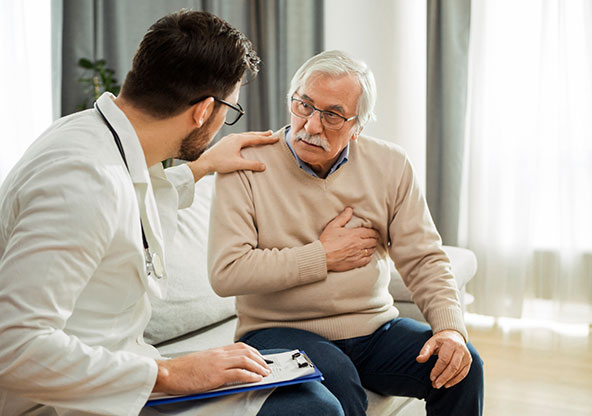Are You Prepared? Learn What to Do If Someone Is Having a Heart Attack

It can happen in an instant. An ordinary moment quickly turns into an emergency when you are face to face with a friend, loved one or stranger who is suddenly short of breath, struck by chest pain or experiencing other telltale symptoms of a heart attack. If you found yourself in this situation, would you know what to do?
Having a plan can help you act quickly should a heart attack happen to someone with you. If this medical event occurs, time is of the essence. The sooner emergency care intervenes, the more heart muscle can be saved. As a result, it is more likely that the person experiencing the heart attack will survive.
Know the Signs and Take Action
If you suspect a heart attack is happening to someone near you, the first and most important thing to do is call 911. You will also want someone to bring you an automated external defibrillator (AED) if one is nearby.
Signs of a heart attack include:
- breathlessness
- fatigue and weakness
- feeling lightheaded
- nausea
- pain in the chest, jaw, arms, back, stomach and shoulder
- tingling and numbness in the arm
- vomiting
While you wait for the ambulance to arrive, do everything you can to help the person experiencing the heart attack stay calm. Also, do not leave the person alone under any circumstances. During this time, you can help the person take heart medication if they have it.
If Loss of Consciousness Occurs
If the person experiencing the heart attack loses consciousness while you are waiting for help to arrive, it is important to use the AED and administer cardiopulmonary resuscitation (CPR). Follow these steps outlined by the American Red Cross:
- Turn on the AED.
- Expose the chest of the person who is having the heart attack and make sure it is dry.
- Apply the AED pads to the person’s chest.
- Do not touch the person and tell others to stand clear.
- Press the button that says “analyze” on the AED. If the machine prompts you to shock the person, do so.
- After the shock, begin CPR and continue for roughly two minutes as you follow the prompts of the AED.
Powerful Prevention
If someone you know is at risk for heart attack, encourage the person to adhere to heart healthy habits, including:
- Choose foods low in added sugars, cholesterol and saturated fat.
- Limit alcohol intake to one drink per day if a woman or two drinks per day if a man.
- Manage weight with diet and exercise.
- Take steps to quit smoking.

